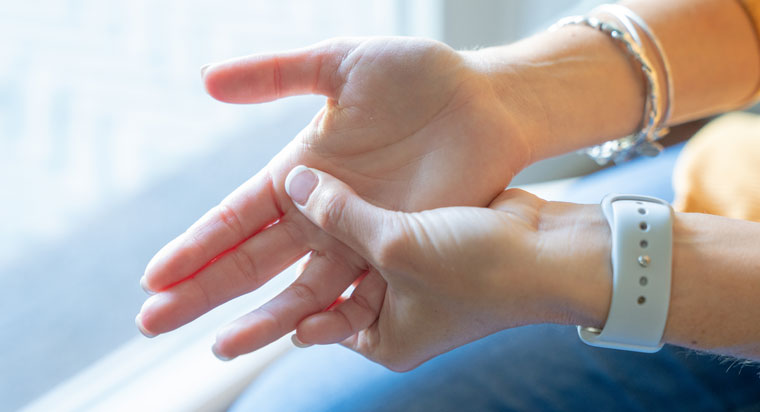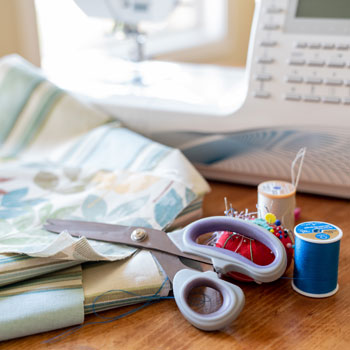Snap, Crackle, Pop: Could You Have Trigger Finger?

Answer a few questions and we'll provide you with a list of primary care providers that best fit your needs.
If your finger gets stuck in a bent position, and you can’t easily straighten it, you may have trigger finger.
Trigger finger is a type of tendonitis (inflammation of the tendon). This painful condition typically affects the thumb and ring finger, which catches or becomes locked when you try to straighten it. The name comes from the trigger-like snap that happens when the finger is suddenly released.
Anyone can get trigger finger, but it’s more common in women older than 45. If you suspect you have it, your doctor can confirm the diagnosis. Often, you can treat trigger finger successfully with splinting or with a cortisone injection, but in some cases, surgery is needed.
What Causes Trigger Finger?
 When everything is working right, the tendons that bend your fingers move smoothly. These tendons slide through a tendon sheath made of a series of loops called pulleys, much like a fishing line glides through channels to keep the line next to the fishing pole. Finger triggering happens if the first pulley loop at the entrance to the sheath tunnel swells and becomes narrower. In some cases, the tendons rub on the thickened pulley and become swollen or thicker from the rubbing, making it even harder for the tendon to slide easily through the tunnel.
When everything is working right, the tendons that bend your fingers move smoothly. These tendons slide through a tendon sheath made of a series of loops called pulleys, much like a fishing line glides through channels to keep the line next to the fishing pole. Finger triggering happens if the first pulley loop at the entrance to the sheath tunnel swells and becomes narrower. In some cases, the tendons rub on the thickened pulley and become swollen or thicker from the rubbing, making it even harder for the tendon to slide easily through the tunnel.
Trigger finger appears more frequently if you have certain medical conditions, including:
- Rheumatoid arthritis
- Partial tendon lacerations (cuts)
- Gout
- Diabetes
Tightly gripping power tools or steering wheels for long periods of time can also cause triggering.
Trigger finger is a type of tendonitis (inflammation of the tendon).
How Is Trigger Finger Diagnosed?
Your doctor can diagnose trigger finger during a physical exam if you have symptoms. When you have trigger finger:
- Your finger may have stiffness or snapping when straightening from a bent position.
- In more severe cases, the finger can be locked in a bent position.
- You have painful snapping or popping when you straighten your finger.
- You have a tender bump on your palm at the base of the finger.
- Your symptoms are worse in the morning.
What’s the Treatment For Trigger Finger?
Mild trigger finger is treated by reducing the swelling, which makes it less likely that your finger will trigger. Self-care remedies include:
- Wearing a splint or taping your trigger finger to a healthy finger
- Applying heat and ice, and stretching
- Changing the activity that aggravates your finger
Your doctor may also give you a steroid injection, which reduces swelling. She may try a second shot if the first one doesn’t help enough.
When nonsurgical treatments don’t relieve symptoms, your doctor may suggest surgery as the best way to get your finger moving smoothly again.
Answer a few questions and we'll provide you with a list of primary care providers that best fit your needs.
Sources: HealthPages.org; American Society for Surgery of the Hand; MedlinePlus

